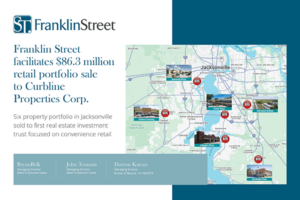The quest to optimize building performance
Like other fields, the multifamily industry has no shortage of data. Also like others, it’s often held back by its inability to distill the mountains of data into predictive insights.
But the industry is moving forward in its quest to better leverage data analytics to optimize building performance. It is even making progress toward a long-elusive goal embracing an industry standard to benchmark property performance.
One big hurdle has been simplifying data for use by individuals with different needs, according to Jay Denton, senior vice president of analytics at Axiometrics. It could be a leasing agent checking on units coming available during a given period or deciding whether rental rates are too aggressive. “Or it could be someone higher in the organization who needs data packaged a certain way,” Denton said.
“Someone else might be analyzing the data from the angle of what increased rents might be achievable as a result of various renovations and enhancements.”
Proliferating data points
While rental rates, year-over-year rent growth and occupancy rates are all key data points, these only begin to suggest data analystics’ potential. “In a strong market like the one we’re in, we break out data down by floor plan, so we can tweak rents up when supply is low and down when supply is growing,” said Chad Dewald, vice president of multifamily at Franklin Street. Data lets the company market “on-notice” units at very aggressive price points, then lower the prices if they don’t rent, and permits it to track incremental inflation of construction-related labor and materials costs so a siding replacement doesn’t throw off budget projections.
At Chicago-based Waterton, the company is changing the way it views and assesses service data, according to executive vice president of operations Lela Cirjakovic. “we’re looking at the correlation between resident satisfaction rates and other key performance indicators, such as retention and related turnover costs,” she said.
Companies are finding their properties’ economic losses are an increasingly useful metric, noted Jack Tabor, asset analyst at The Habitat Co.
“In addition to physical vacancy, it adds in rental concessions, collection loss and – depending on the reporting method – non-revenue units within the property,” he said.
Formerly ignored data points are coming under greater scrutiny, according to Sacha Ferrandi, founder of San Diego-based real estate finance company Source Capital Funding. “Huge metrics often overlooked are staff turnover and third-party contractors,” she said. “Making these metrics more efficient can help a lot with the bottom line.”
For companies seeking insights from current properties when planning new ones, data on usage of building amenities is very helpful. So said Robert Cooper, president & CEO of Embue, a Boston-based smart technology platform specifically for multifamily communities. “You can get real usage data by putting in building sensors, possibly tied to door locks, helping you devise security for these spaces by getting a sense of how they’re being utilized,” he said. “You can determine how many different people are going into the gym, when they’re using it and how many are there at any one time.”
Energy analytics
Crucial renting populace cohorts Generation X and Y demand greater sustainability and sensible energy utilization than their predecessors. That means data analytics covering energy usage will assume increasing importance. Moreover, those analytics will be leveraged when reporting back to residents on energy initiatives.
More efficiently meeting common-space energy demands requires adding new smart analytic data points to learn where, why and how electricity, gas or water usage may be spiking across the community, Cooper said. “You can find out what areas of the building are using unusual amounts of energy and identify outliers,” he said.
“Now you’re seeing the building on a more fine-grained basis regarding apartment-by-apartment and minute-by-minute utilization. You’re generating a ton of data, with data every minute across 200 apartments as you look for outliers.”
Companies have long sought to gauge performance of their portfolio properties against other assets in the same markets to enable apples-to-apples comparisons. But the growing sophistication of data analysis means even apples-to-oranges property comparisons can sometimes be converted so they have greater parity. “You can, for instance, factor out climate differences to get an apples-to-apples comparison of energy usage at your portfolio assets in, say, Boston and Charlotte,” Cooper said.
When it comes to measuring performance against competitive properties, the problem that has flummoxed man multifamily data analysis has been the lack of an apples-to-apples comparison in the industry. As Cirjakovic says, “The data isn’t standard. In hospitality, terms like RevPAR are widely used. In multifamily, there isn’t a standard.”
The historic lack of a multifamily standard really “came down to data sharing in the industry,” noted Rick Haughey, vice president of industry technology initiatives for the National Multifamily Housing Council. But growing transparency within the industry led the NMHC to work toward a single metric beginning in 2015.
“We convened a group, came up with a metric, and are currently working toward getting the industry to agree on next steps,” he said.
“The goal is not to replace the many benchmarks already in existence in the industry but to create on benchmark agreed upon by everyone to be used for the purpose of benchmarking the performance of a property.
“We came up with revenue per unit, or RPU. … Once it’s established, it will be up to the industry to determine whether it’s something they all want to use. We see it as a long-term process, but one well worth pursuing for the advantages it will provide in benchmarking property performance and improving access to capital.”
The value of data in multifamily is only starting to be realized, experts agree. Noted Cooper: “Once we get into this, there will be even more opportunities we’re not even thinking about right now to either make more money or save more money.”
View the original story here: https://www.bluetoad.com/publication/?i=354131#{“issue_id”:354131,”page”:22}



